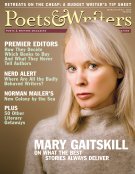In 2008, Gutkind did edit a slim book called Keep It Real: Everything You Need to Know About Researching and Writing Creative Nonfiction (Norton) that emphasizes the importance of research in all kinds of creative nonfiction. A collaborative effort by twenty writers whose ideas and voices are blended together, the book lays out a number of fact-gathering methods. But because it attempts to cover all aspects of creative nonfiction writing (even publishing) in just 161 pages, fact collecting and assessment receive only cursory treatment.
It is important to note here that Moore and Gutkind and others like Philip Gerard, Bill Roorbach, and Michael Steinberg—all of whom have written or edited books on creative nonfiction with titles or subtitles like The Art of Truth or Researching and Crafting Stories of Real Life—teach in university writing programs (as do I). Most of their programs offer a master of fine arts degree, and they themselves think of the writing they write and promote as art. From this springs their preference for words like creative or literary or even nonfiction over, say, narrative or journalism or that old stuffy term, expository writing. They are artists first, craftsmen second.
So what about those on the other side of the fence? Those who proudly call themselves journalists? Those who prefer the word craft to art because art to them is a slippery term? Are they stuck in their inverted-pyramid ways, as Gutkind suggests, or have they freed themselves? And if they have, how do they view the use of what are commonly called fictional techniques in writing fact-based stories?
I have to confess here that I went to journalism school, have worked as a journalist, and continue to freelance for a major newspaper. As a reviewer and writer about the arts, I've had my share of fights with copyeditors wanting to excise the "I" from my writing. Among hidebound journalists (and editors, in particular) there is, as Gutkind suggests, resistance to abandoning journalism's traditional ways. But over the past two decades or so, attitudes have been changing rapidly, influenced not only by the New Journalists but also by a new generation of fact-based writers who practice what Robert Boynton, in his book of conversations with some of them, calls The New New Journalism (Vintage, 2005).
This new generation may include the journalists Moore was warning his audience about, authors like Orlean and Krakauer, Jonathan Harr and Jane Kramer, whose fact-based books are finding a larger readership. What distinguishes them from traditional journalists is that they trust their perceptions, accept that objectivity is a myth, and work hard to communicate the human dimensions of their subjects by using storytelling techniques—a narrative approach, a distinctive voice, scenes and dialogue and setting. What sets them apart from those who insist on words like creative and art is that they're reporters and researchers first. Gumshoes and craftsmen. Their stories always begin with strong—often exhaustive—reporting.
In fact, what distinguishes these New New Journalists from the old New Journalists is a greater awareness of all the ways a story can be reported—by spending extended amounts of time intimately involved with their subjects, for example, or bringing in relevant information from ancillary fields such as anthropology or sociology—and the firm belief that any idea can lead to an authentic story if the research is done well. In pursuit of authentic stories, they've hopped trains with hoboes, followed an orchid aficionado into the Florida swamps, and mucked through the rat-infested meatpacking plants that service the fast-food industry. They've also used their imaginations to find less-than-obvious sources for plausible—often visceral—depictions of events they couldn't witness themselves.
For his best-seller The Perfect Storm (Norton, 1997), for example, Sebastian Junger blended information from interviews and documents from as long ago as the nineteenth century to imagine the final moments on a fishing boat that sank without survivors. Nothing he used was more effective than an 1892 account—from a Scottish doctor who lost consciousness underwater yet somehow survived—of what it feels like to drown. Inserted just before Junger's imagined description of the fishermen's deaths, the doctor's account makes us feel in our bodies what those men probably endured. "It's as close," Junger writes, "as one is going to get to the last moments of the Andrea Gail."








